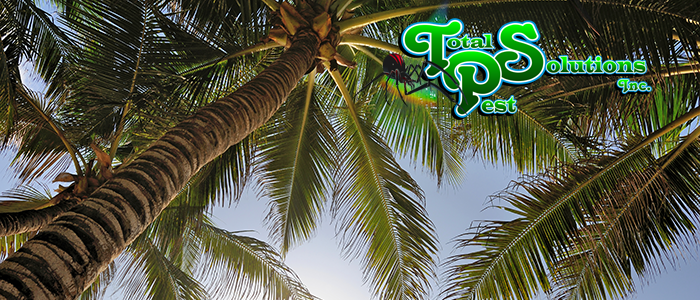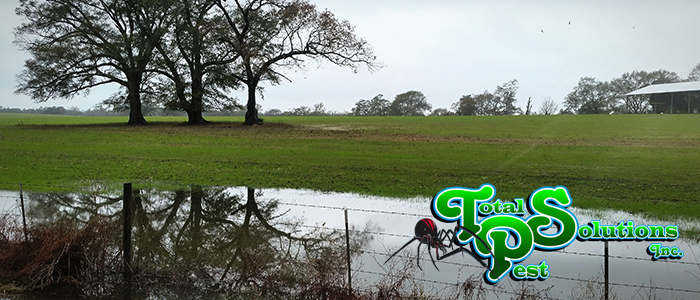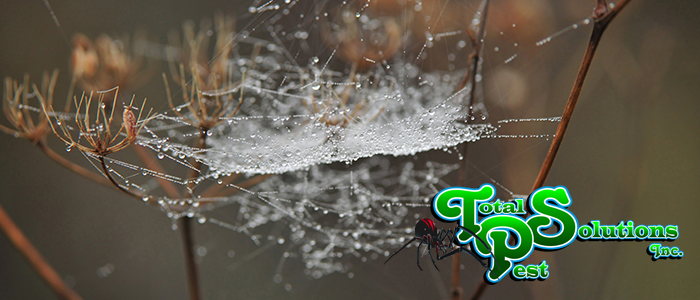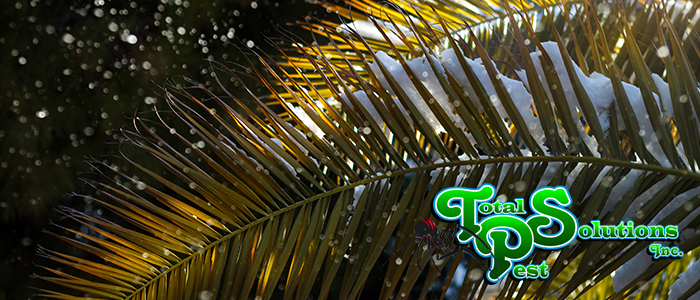
Floridians are some of the only people in the country who can have palm trees in their landscaping. As amazing as this is, it also means that it is better to turn to local lawn care providers than national chains. Total Pest Solutions offers quarterly or bi-monthly plans for palm care. Read on to learn the basics of palm care.
The Structure
Palms do not have branching roots like a majority of other trees. They do have a ball of roots that are buried fairly shallowly. This is because palm trunks should not be underground at all. This means that the root system is usually barely covered. Oftentimes, a root ball does not increase in size as the tree it is connected to grows.
Typically, palms have a single trunk that starts wide and tapers upward. At the upper end of the trunk, there is a single grow point. This point is also called the terminal bud. The terminal bud is the point from which all of the fronds, as well as blossoms and fruit, grow. The terminal bud is so important that if it is damaged, it has the potential to kill the entire tree.
Common Pests
Certain pests thrive in Florida’s tropical climate, specifically on palm trees.
Cabbage Palm Caterpillars
These caterpillars concentrate almost entirely on the cabbage palmetto. They destroy the blossoms of the tree, but usually do not kill it.
Giant Palm Borer
The borer is a beetle that is approximately the size of a human thumb. The borer gets its name because it consumes the trunk wood of a few varieties of palm. Grubs live inside the holes bored into the trunk by their parents. They live in those holes for years, up to a decade, before emerging as the large, unsightly beetles.
Palm Budworm
Budworms feed on the flowers of fan palms.
Palmetto Weevil
Weevils are well known for their ability to destroy crops and plants. Unfortunately, palm weevils are extremely widespread and not picky when it comes to diet.
Royal Palm Bug
These pests only feed on the royal palm, but it is unusual for them to kill one of the trees. They ruin the aesthetic of the tree entirely, however. Additionally, they are considered particularly difficult to treat because of the size of royal palms.
Thrips
Thrips do not kill the plants that they infest. Rather, they just partially drain the plant of sap and then move on. This often leads to wilted and discolored palm fronds. If the infestation is significant enough, then their excrement becomes visible. Homeowners identify it as ugly black splotches on leaves.
Many of these pests seek out the leaves and the bark of specific types of palm trees. Make sure to communicate what type of palm tree you have to your palm care specialists.
Common Diseases
In addition to pests, Florida’s tropical humidity also harbors disease for some palms.
- Bud Rot
- Fusarium Wilt
- Ganoderma Butt Rot
- Lethal Yellowing
Join Us Next Week
Come back next week for more information about palms.
continue reading
Related Posts
Auburndale’s Post-Storm Lawn Recovery: Addressing Flood Damage Following a severe
Davenport’s Spider Invasion: Managing Winter Web Builders As the temperature
Winter Palm Care in Lakeland: Cold Snap Protection Strategies Lakeland,






